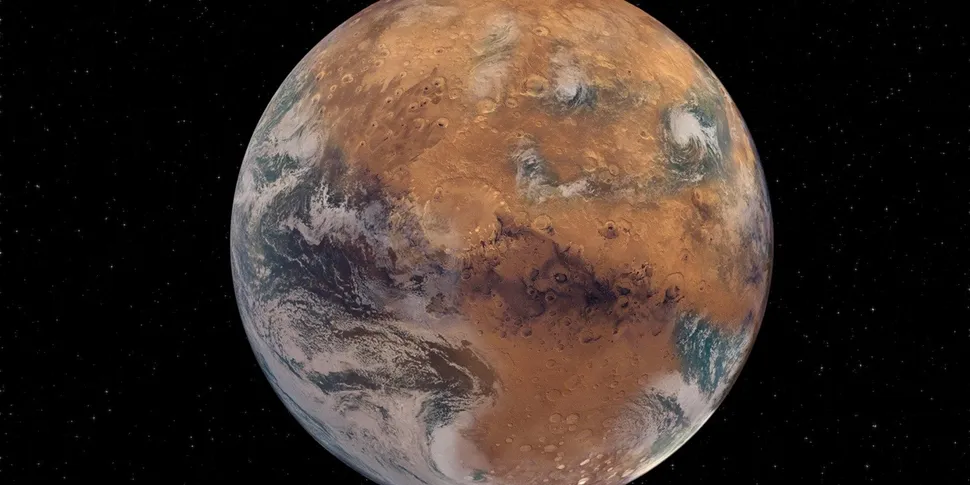Mars lost its water and atmosphere 3.5 billion years ago after its magnetic field failed.
Key Takeaways
- Mars was doomed to lose its surface water due to its small size and low gravity.
- The planet’s inability to maintain a global magnetic field further accelerated atmospheric and water loss.
- Martian meteorites reveal Mars lost more volatile elements during formation than Earth.
- Small planets face a double setback for habitability: early water loss and weakened magnetic protection.
- The findings guide astronomers in narrowing the search for habitable exoplanets in other systems.
________
The Red Planet’s Ancient Waterways
Mars, once a planet with lakes, rivers, and possibly a vast northern ocean, saw its surface water vanish about 3.5 billion years ago. NASA’s rovers, including Curiosity and Perseverance, have uncovered evidence of this watery past, but the new study, published in Proceedings of the National Academies of Sciences, reveals why Mars couldn’t hold onto its water: its small size.
The loss of Mars’ global magnetic field played a key role in stripping away its atmosphere, exposing the planet to solar winds. However, the study points to a more fundamental cause: Mars’ insufficient gravity to retain water and volatile elements over geological time scales. “Mars’ fate was decided from the beginning,” said Kun Wang, assistant professor at Washington University.
Evidence from Martian Meteorites
The research team, led by graduate student Zhen Tian, analyzed 20 Martian meteorites spanning 4 billion to 200 million years in age. These meteorites were studied for isotopes of potassium, a tracer for volatile compounds like water. The results showed Mars retained fewer volatiles than Earth, which is nine times larger, but held onto more than smaller, drier bodies like the Moon and the asteroid Vesta.
The isotopic analysis highlights a novel correlation between planetary gravity and volatile retention, offering a quantitative perspective on how differentiated planets lose their volatiles. Co-author Katharina Lodders noted that this discovery addresses long-standing questions about why smaller planets and moons are significantly drier than Earth.

Implications for Habitability and Exoplanets
Mars’ small size proved to be a double obstacle for habitability. Its size not only caused significant water loss during formation but also led to the early collapse of its magnetic field, leaving its atmosphere vulnerable. On the other hand, Earth’s stronger gravity and active dynamo continue to sustain its magnetic field, helping it retain a habitable surface environment.
This research has implications beyond Mars. Klaus Mezger from the University of Bern emphasized that the findings narrow the size range for planets capable of sustaining surface habitability. This is crucial for astronomers hunting for exoplanets with the right balance of water and atmosphere.
While surface water is long gone, scientists speculate Mars may still harbor underground aquifers. Similarly, icy moons like Europa and Enceladus have subsurface oceans, proving that habitability can exist beyond traditional expectations.




